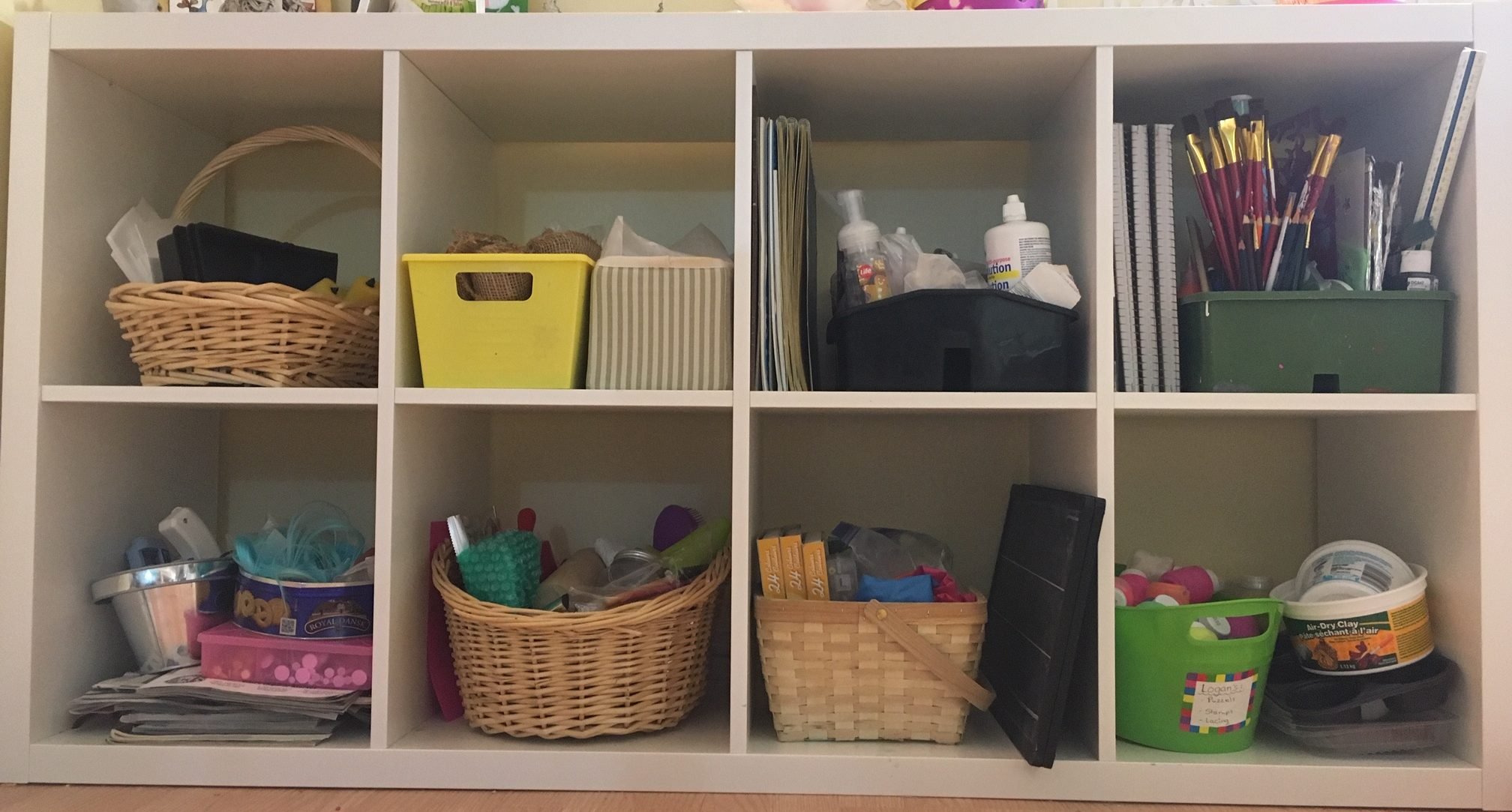12 Tips to Manage Recycled Materials in Your Homeschool
Recycling bin overflowing? Kids want to create but the mess freaks you out? Manage your recycled materials in your Homeschool with these 12 Tips and start creating today!
Art Time is my favorite time in our homeschool.
I have always loved art and I wanted to give my children the opportunity to explore art in its many mediums, and using recycled materials is so much fun!
The things I like to collect and keep in our art room for art projects are:
- Toilet paper rolls
- Paper towel rolls
- Plastic bottles
- Egg cartons, styrofoam, and cardboard
- Cereal boxes
- Milk Jugs
- Gift Bags
- Tissue Paper
- Miscellaneous Stuff
I have a ton of stuff, now what?
Perhaps you have gathered these items together in a large bin, but how can you put these to good use for art projects?
"The best way I found to encourage creativity is to read about it with your kids!"
This is my kids' favorite book about Junk:
After reading this book, over and over and over again, I began to see my son's interest in collecting recycled things increase. This did pose a clutter challenge. But, here are some of our fixes for you!
12 Tips for Managing the Clutter with Recycled Materials in your Homeschool
1. Keep it within reach.
Having our recycled materials close to the school table helps my kids access the cardboard and paper rolls when they feel the urge to create something on their own as well.
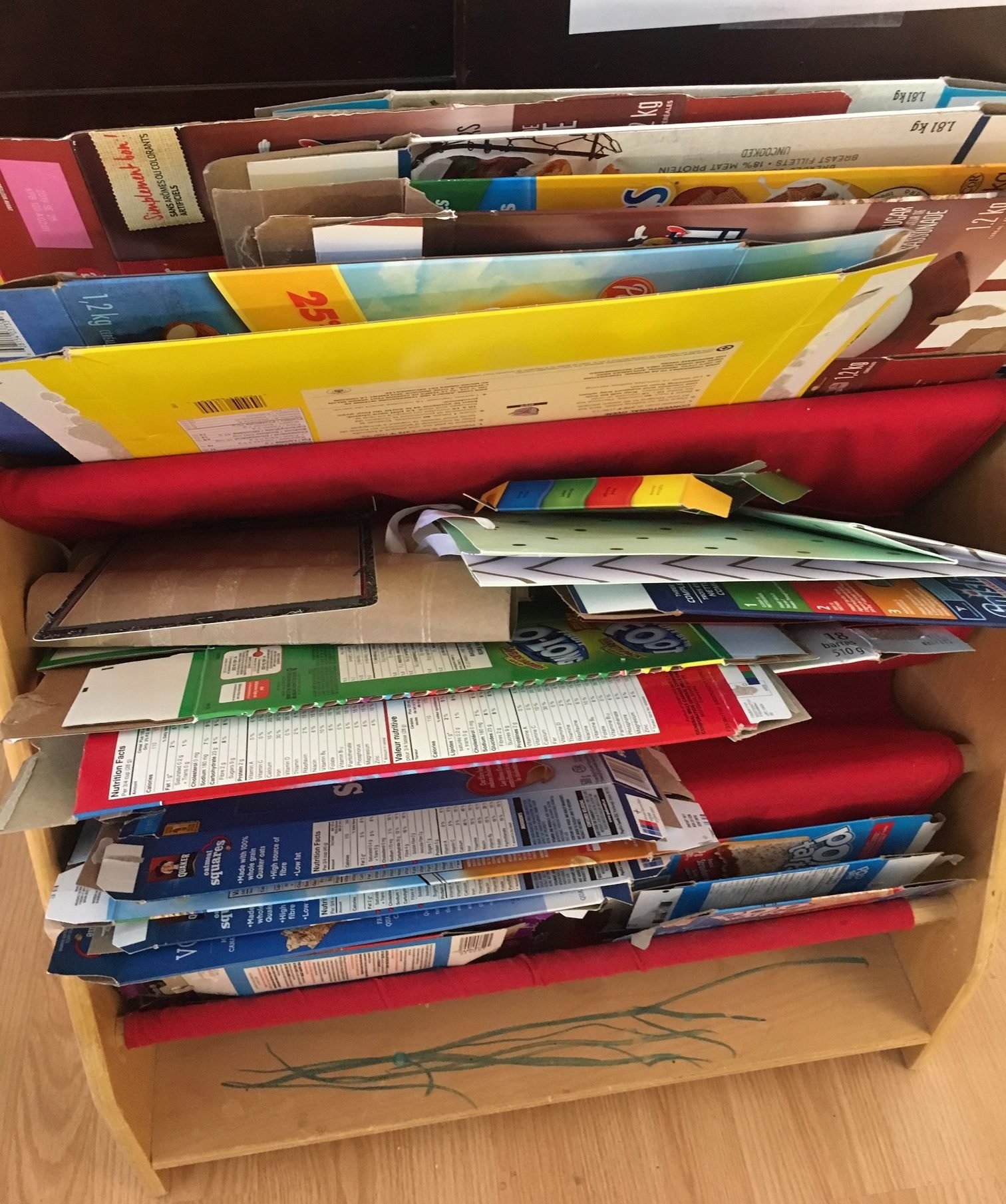
2. Repurpose old things to work for you in a new way.
I recently had some inspiration on what to do with this old cloth bookshelf. In fact, this idea was a good one, and my kids really like seeing the options for cardboard at their fingertips. We all can go to this easily and refill it once we have another empty cereal box. It has enabled more open-ended crafts, that my son just simply starts on his own. I will wake up to him cutting paper and coloring away. Since this photo was taken, we have added more items in it, as we shuffle through our recycling daily.You can store toilet paper rolls, gifts bags, egg cartons, scrap wrapping paper, smaller boxes from craft supplies, etc. We have it in the school room, in a place where the kids walk past often, so they can see it and I can make sure it stays tidy.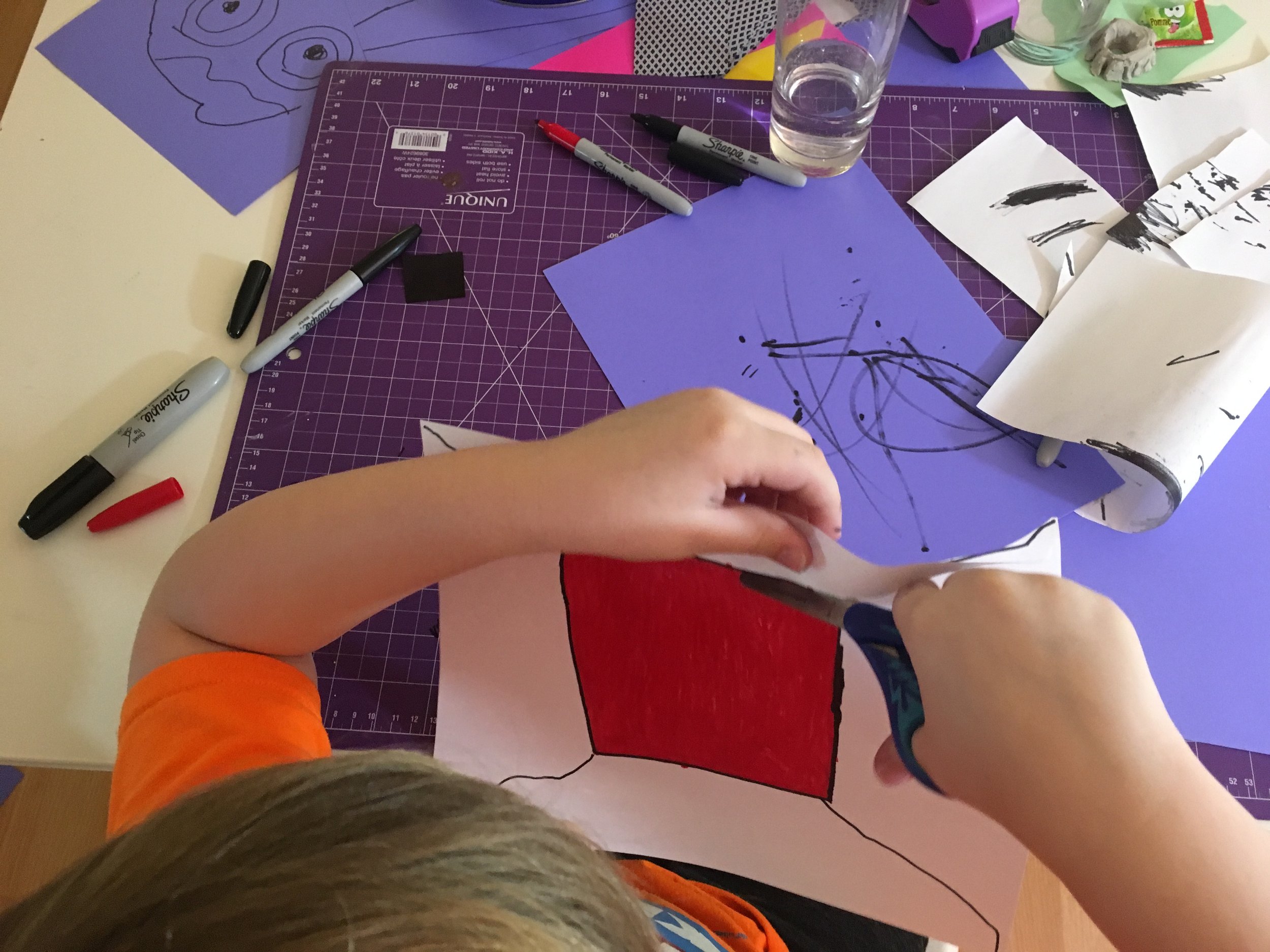
3. Save the leftovers.
I have also created a small bin for all the scrap cardboard and cardstock to be placed, that end up on the table, or the ground at the end of the day. We can then use them again in another project tomorrow. I placed it next to the paper dispenser. The kids and I can easily get to the supplies that are needed to create anything fun! Now when I do the end of the day sweep up, I am not throwing it all away. It is not garbage!
4. Table Protection.
A handy tool that we love is this fabric cutting pad. I pull it out when my son starts working on the crafts, or when he wants to use sharpie markers (they are his favorite). It helps keep the table looking nice, and we keep it out constantly. It is also really great for when they want to play with molding clay and the hot glue gun.
5. Keep the Daily Supplies close at hand.
We love our drawers and caddies. These have served us well, and are really easy to move around (and that's important to me because I think our homeschool space has been in almost every room of this house, at one time or another) Portability is nice, but also its function works well. Keeping the kids things they need daily, close at hand is really vital in helping the kids find what they need when they need it. If you are constantly running around the house for scissors (still happens) its harder to do those arts and crafts.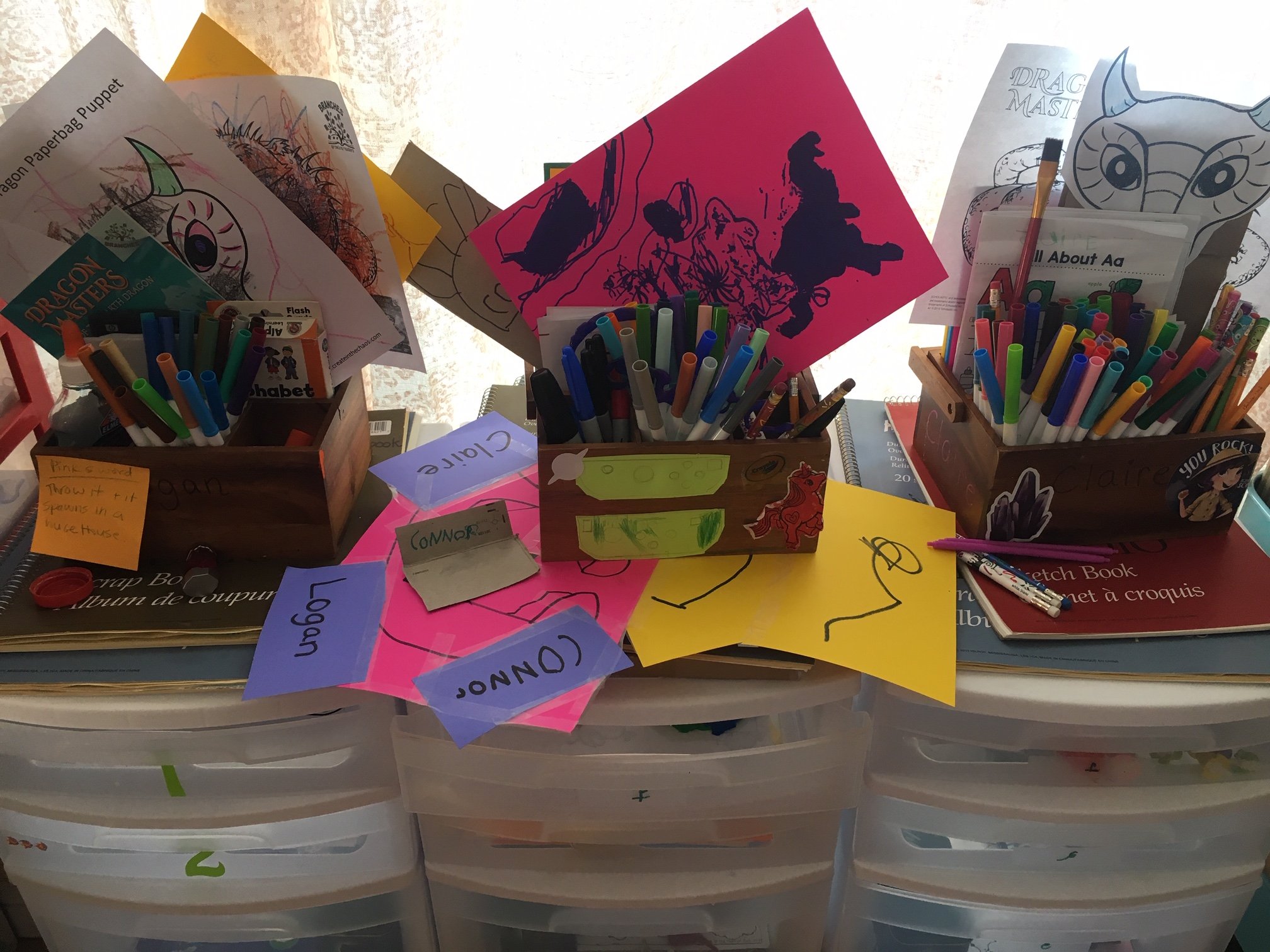 Right now, it is a bit cluttered, I will not lie. But, this is a good sign, trust me.They have been creative, they have been working, and they have projects still to complete.I keep the unfinished projects in their caddies, so they can see them right away (so can I).
Right now, it is a bit cluttered, I will not lie. But, this is a good sign, trust me.They have been creative, they have been working, and they have projects still to complete.I keep the unfinished projects in their caddies, so they can see them right away (so can I).
6. Put away daily.
When you are done with your activity, put it away in the caddy, drawer, or back on the shelf. If it has a home, it can go back. I will say I am the one doing this task for the most part, but I do try to encourage the kids to try to do this and play a game - my boys like to see how many they can put back, or how fast they can clean it up. Get creative, and maybe they won't find it so much like a chore.
7. Clean regularly.
I clean out their caddy's every 6 months, as I do with their drawers and most everything else in the school room. I also seem to replace their markers around that time as well. We no longer store crayons in the caddies as they are too small to really find what color you need, and seem to take up too much space needed for other things. We keep a large box of crayons on the computer desk to use and share when needed.
Similar Caddies that would do the job:

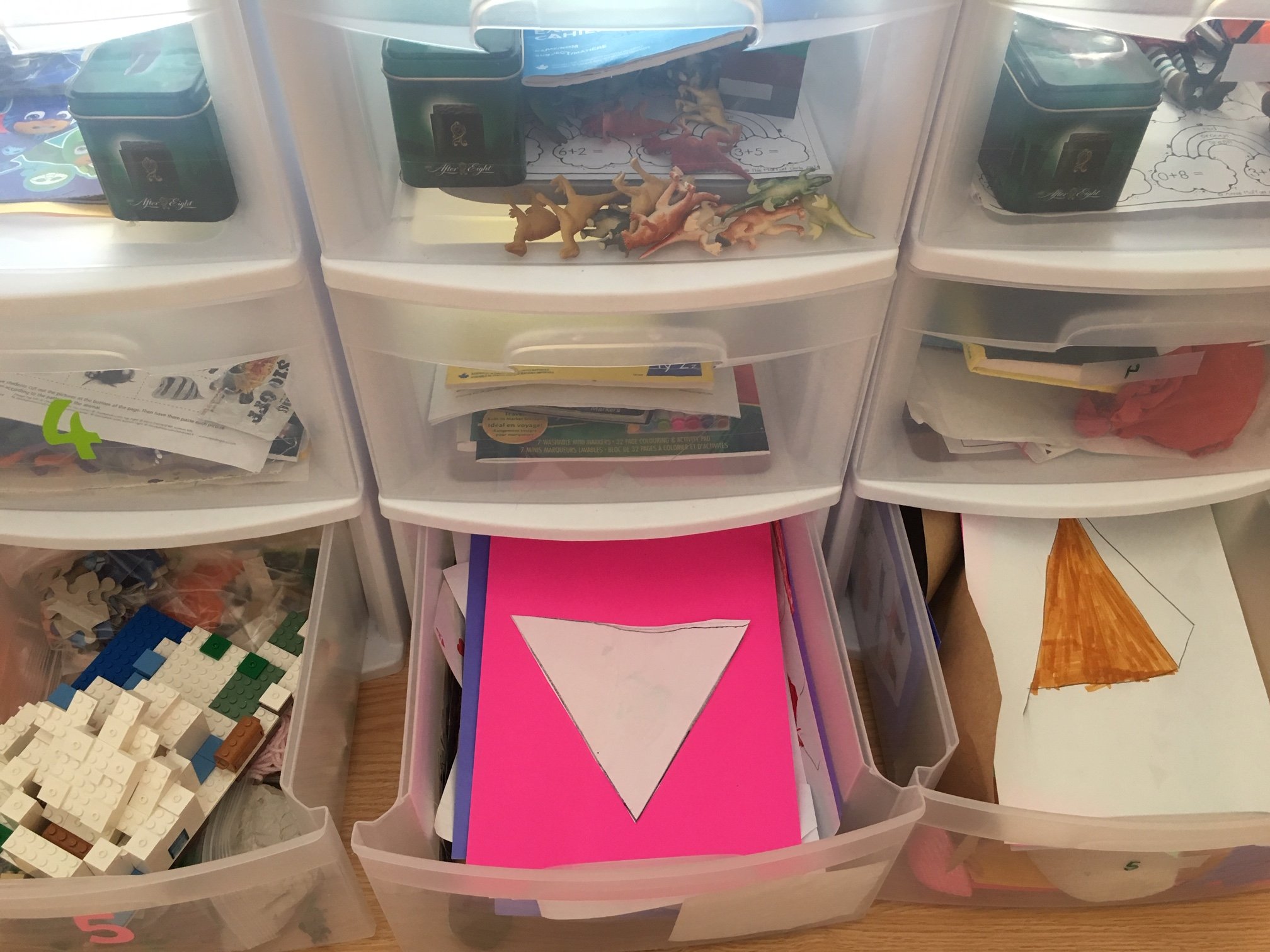 In the bottom drawers, I store a lot of their papers that they have been working on and that are finished. I try to go through those drawers every 6 months as well. My youngest likes to keep some of his lego builds there for play time, and that can lead to story writing as well. Read more about what his school work looks like here.
In the bottom drawers, I store a lot of their papers that they have been working on and that are finished. I try to go through those drawers every 6 months as well. My youngest likes to keep some of his lego builds there for play time, and that can lead to story writing as well. Read more about what his school work looks like here.
8. Keep the best, trash the rest.
"Where do you store your kids' art projects?"I get asked this a lot, and for the most part, I do not have the best answer, because like most of us I do suffer from clutter and the increase of my children's homeschool creations doesn't help.But, that is what brings us joy as homeschool parents, am I right? Seeing our children work, and create and ultimately learn and grow. But, with that comes all the stuff.We are required by law, to keep our homeschool records for a few years and as the years go by, that does not help with decreasing clutter. However, with the upcoming Instagram Challenge that I have been planning, (more on that soon!) I have learned a good tip: Keep the Best, Trash the Rest. So with that wise advice, I realize that I have been doing that, for the most part.I keep scrapbooks on top of their drawers but under their caddy's. When their drawers and bulletin boards are getting full of things, I take them out and go through them, tossing what isn't awesome, and keeping what is.
So with that wise advice, I realize that I have been doing that, for the most part.I keep scrapbooks on top of their drawers but under their caddy's. When their drawers and bulletin boards are getting full of things, I take them out and go through them, tossing what isn't awesome, and keeping what is.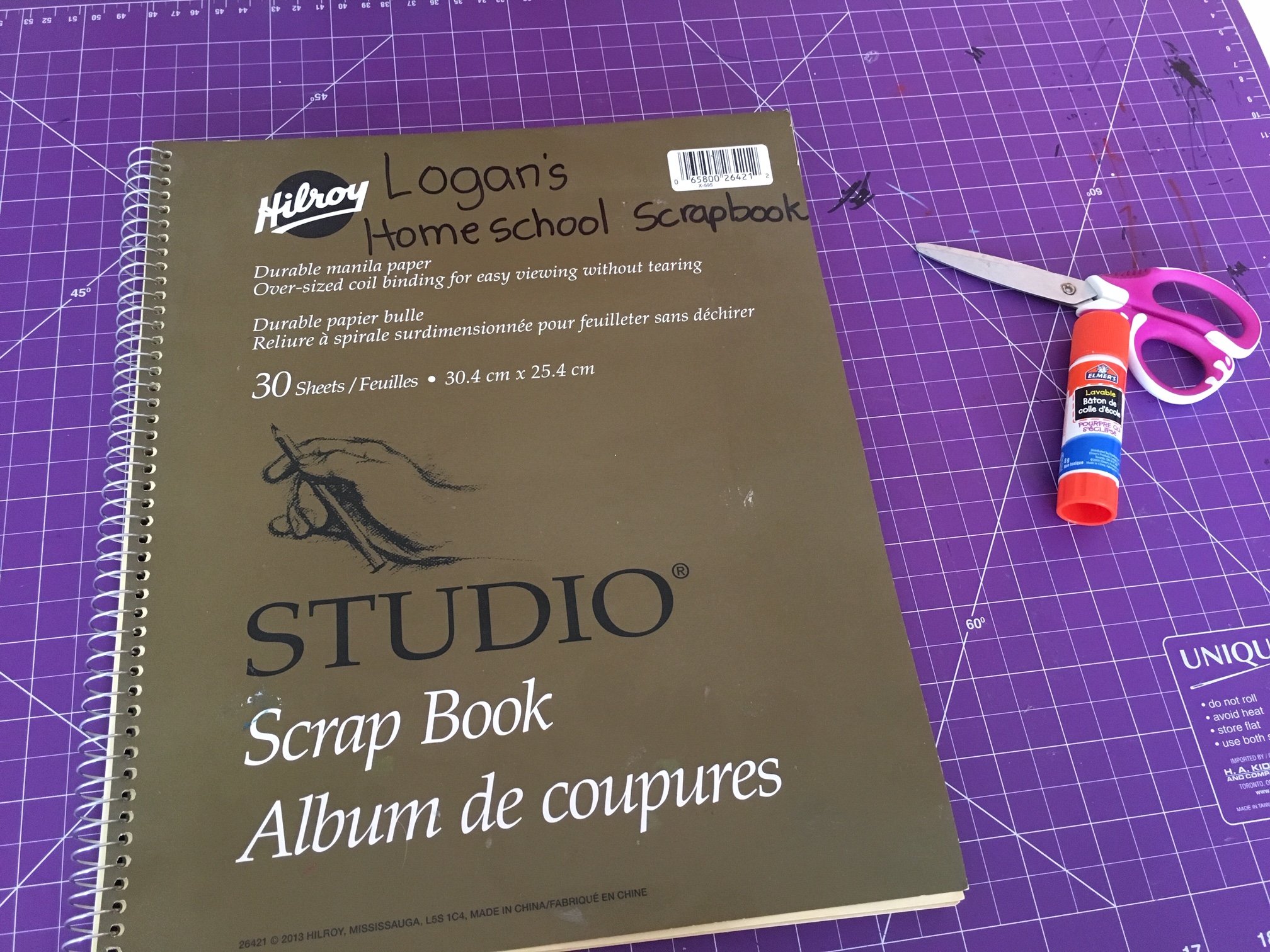 I will glue the items into the scrapbook, to save for memories and for the end of the year evaluation. I have tried to look for this type of scrapbook on Amazon.com, but I cannot seem to find it's equal. Hilroy is a Canadian Brand, so if anyone knows of a brand, please let me know!
I will glue the items into the scrapbook, to save for memories and for the end of the year evaluation. I have tried to look for this type of scrapbook on Amazon.com, but I cannot seem to find it's equal. Hilroy is a Canadian Brand, so if anyone knows of a brand, please let me know!
9. Re-use things that come into your house
You have many things coming and going out of your house. Try to stop and examine them, because you may actually be able to find some use for them. Even the smallest bits and pieces can really be used to create art.My son loves to build things out of most anything. He loves sculpting with many different mediums and while we were learning about Michelangelo with the Build Your Masterpiece Class in the Adventures in Italy, he really became alive with inspiration!I was posting on Instagram the other day, about how I was prepping for our Styrofoam Print Making Art Basket for the Build Your Masterpiece Class, and as I was doing so, I decided to also keep the trimmed edging bits from the Chinese take-out boxes. The tops and bottoms work perfectly for making prints on. (You can learn more about what we use these for here.)
The tops and bottoms work perfectly for making prints on. (You can learn more about what we use these for here.) He saw the bits and pieces and automatically began cutting and taping pieces together. (tape, that is something we are constantly restocking) It was really neat to see, and his sculpture was adorable.
He saw the bits and pieces and automatically began cutting and taping pieces together. (tape, that is something we are constantly restocking) It was really neat to see, and his sculpture was adorable.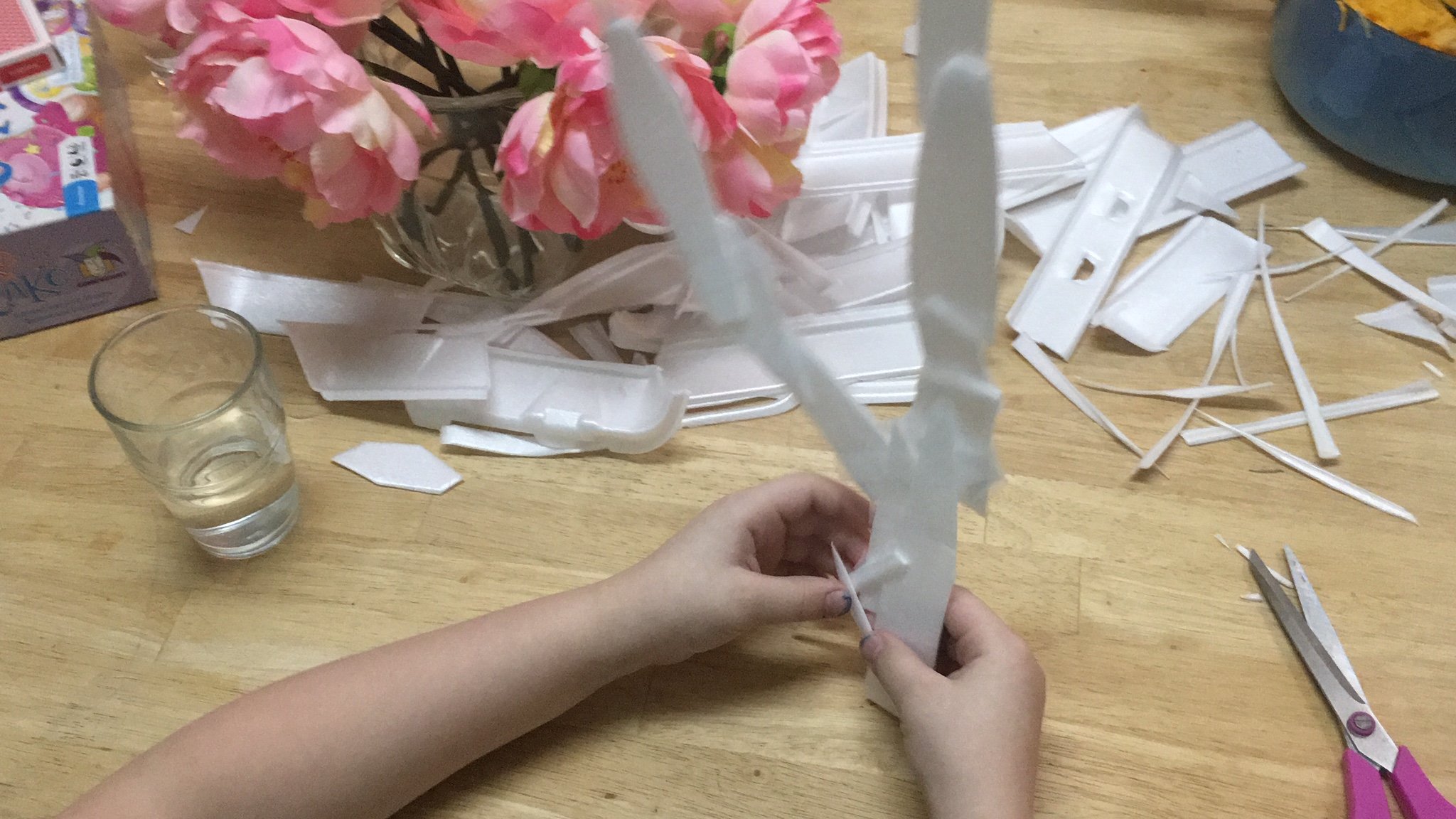
10. What about the Milk Jugs?
So, milk jugs are big. And we go through a ton of milk. We have a lot of them. So I was thinking, how can we store these to use for art projects?In the end, I decided to store my cleaned and dried milk jugs in a corner, that basically was wasted space. They are hidden between two shelves, and there is a lamp in the corner with them, so it really doesn't take up any extra space. I know what you may be thinking... it is a little ridiculous, and I am kinda laughing over here while I share this picture with you, but it really works! I did not have to find space for them, like in a laundry bin under the desk, (which still would not hold as much as this corner does!) This corner solution for me, may not work for everyone, so I wanted to give some more ideas.
This corner solution for me, may not work for everyone, so I wanted to give some more ideas.
- Cut them up into smaller sizes, and store them in a basket, or bin to use later. In fact, I was planning on using them for a project for the Build Your Masterpiece Class, and I would need to cut shapes out of them.
- Store them in a laundry basket, or large bin and tuck that in a storage room for later use. You could also store bottles and cans that way as well.
11. Find a home for everything.
We love our Ikea shelves, and I have baskets, bins, and large utility caddies for many types of art, that we use on a regular basis all year long. Having a space for each item is really important. ( I can hear my husband saying, yes, let's do this for every part of the house) And of course that is the ultimate goal I have, for now, I at least have our art supplies handled.
12. Store Like with Like.
Once you have a home for your items, it really is important to separate them properly. If I have clay with the paint, it really isn't too helpful when my kids want to paint, because they get distracted and want to play with play or vice versa. And then, things don't get put back to the same spot, ever. I have different looking bins for different items, and I find that this helps me and the kids remember what basket is for what activity. It is also all open, and not behind doors.The baskets/bins I store things in:
- Clay Basket
- Styrofoam Painting Basket
- Paint (there are 3 of them)
- Crafts (there are 2 of them on another shelf)
- Slime/Experiments
- Newspaper + Hot Glue Gun Basket + Miscianious. (this section is the one that needs a dividing shelf)
"Store the items you need for certain projects close to each other, and find a space or home for them."
There you have it guys! 12 tips for you to help manage your recycled materials in your homeschool! I hope you have been inspired. Stay tuned for my next post, that has 15 Recycled Art Projects for you to try with your kids!
Make sure you follow us on Instagram because next week we will sharing a really great challenge that you won't want to miss!
Til next time,
Enjoy building your masterpiece with scissors and glue and recycling art too!

If you enjoyed this post, you may also like one of these:
A Message in a Clay Moon Art Project
Making Crystals
House Cleaning Tips for Your Homeschool









